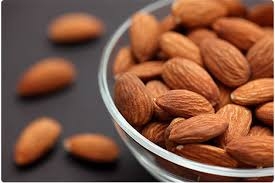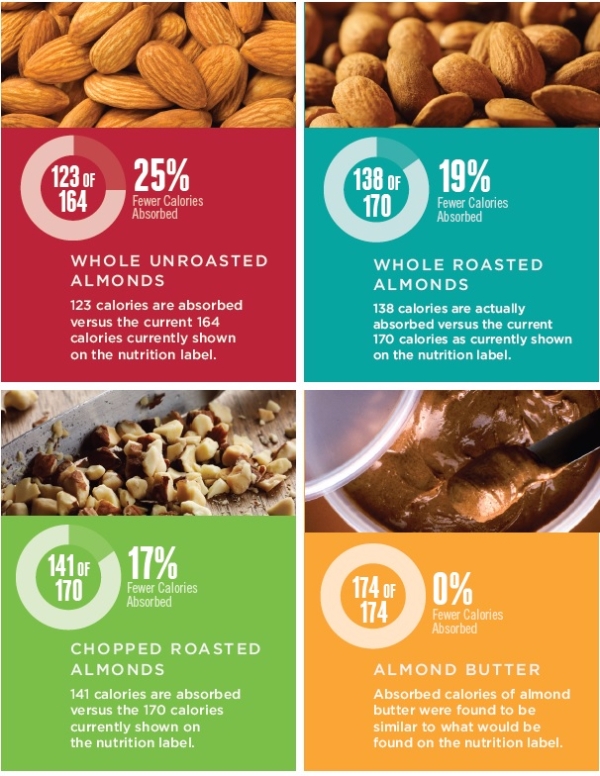
almonds.com
David Baer, PhD, and his team from USDA’s Agricultural Research Service (ARS) conducted a controlled human clinical trial (Gebauer et al) using a new method to measure the calories absorbed from almonds, taking bioavailability into account. The new method allowed the researchers to determine the number of calories actually digested and absorbed from almonds.
In a nutshell:
- Compared to the number of calories listed on nutrition labels, participants in the study actually absorbed 25% fewer calories from whole unroasted almonds.
- If they ate whole roasted almonds, they absorbed 19% fewer calories.
- Chopped roasted almonds provided 17% fewer calories, though the difference between the calories absorbed from chopped and whole roasted almonds was not statistically different.
Why the discrepancy between the two methods of determining calories?
The original Atwater method of calculating calories may overstate the calories from almonds because it simply doesn’t account for the fact that not all calories from almonds are available to the body. The chewing process does not completely break down almond cell walls, and almonds are therefore not completely absorbed during digestion.
Why the calorie difference between almond forms?
Much of this finding has to do with particle size after chewing and digestion. The larger the particle size, after chewing for example, the less the almond is able to be broken down by digestive enzymes and more of the almond is excreted, so fewer calories are absorbed. The reverse is also true: the smaller the particle size, the more almond cells are exposed to digestive enzymes and the more calories are absorbed.
According to David Baer, PhD, “Calories are created equal but their availability from foods is not equal. These new findings confirm that we actually get fewer calories than we thought from almonds, whether they are whole or chopped, roasted or unroasted, and the amount of calories absorbed is mostly dependent on the form of almonds consumed.”
Further research is needed to better understand the results of this study and how this method of measuring calories could potentially affect the calorie content of other foods.
Ref: Gebauer SK, Novotny JA, Bornhorst GM and Baer DJ. Food processing and structure impact the metabolizable energy of almonds. Food & Function. 2016;7(10):4231-4238.
With thanks to the Almond Board of California for their help and infographics.


